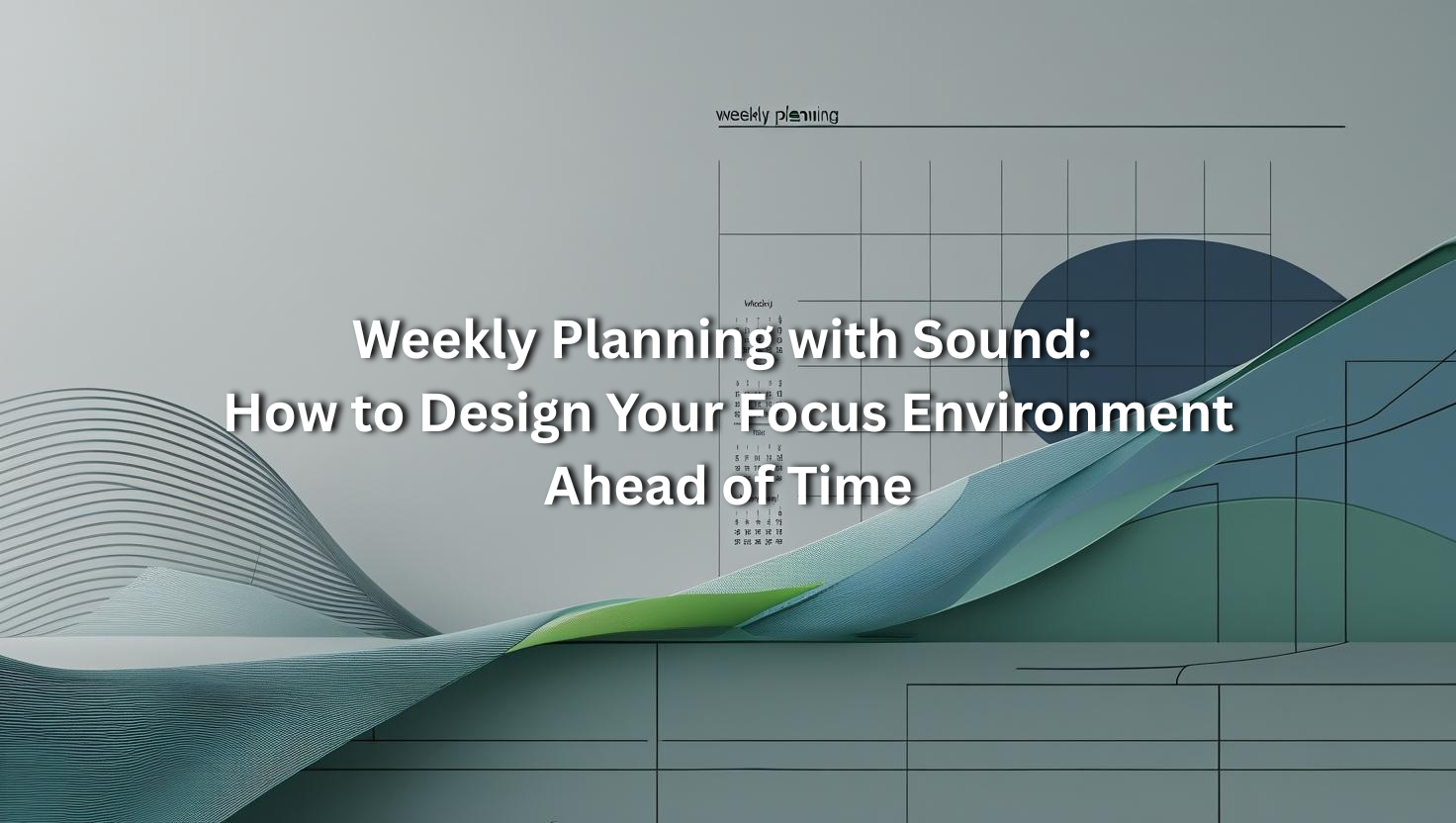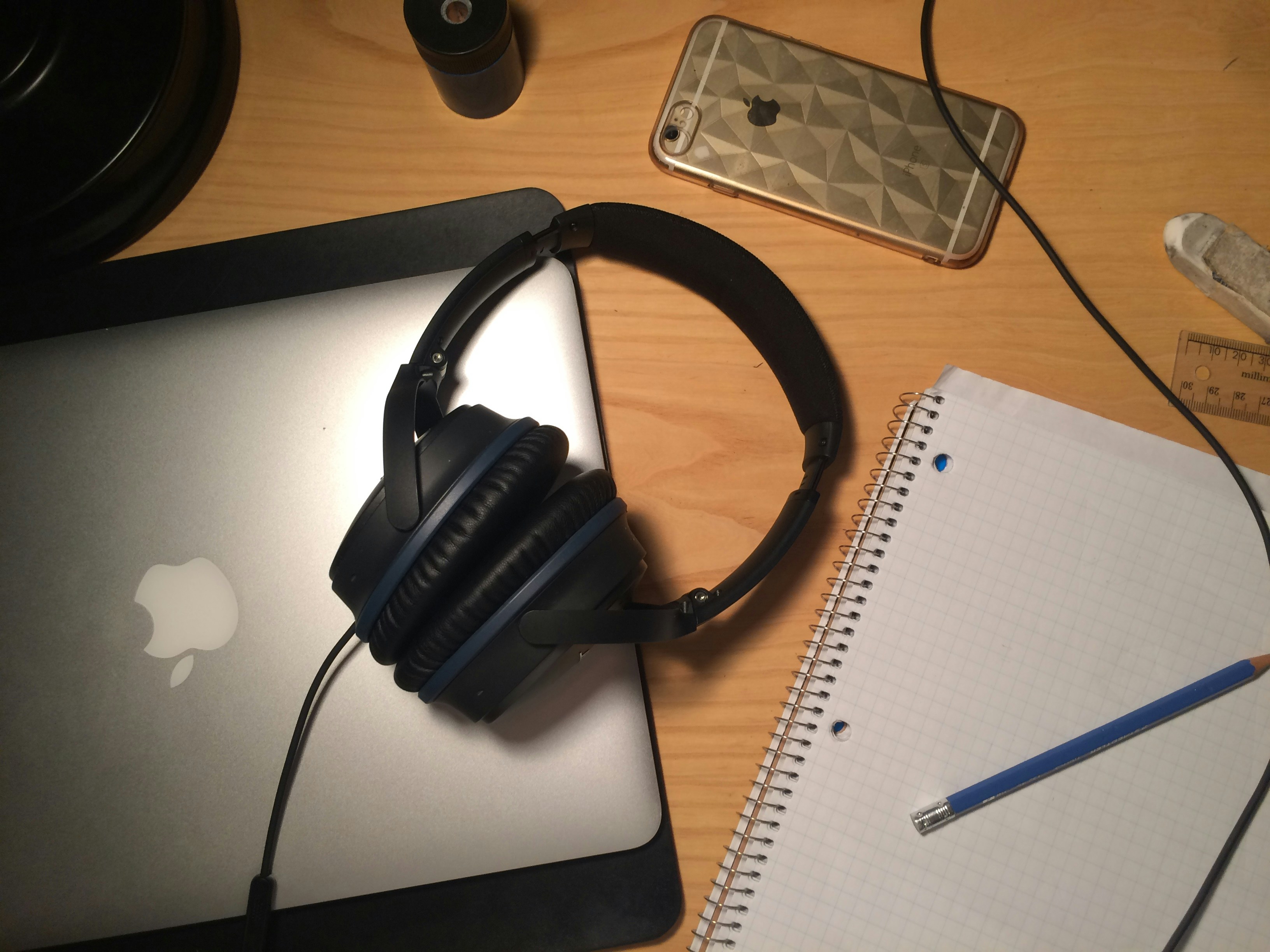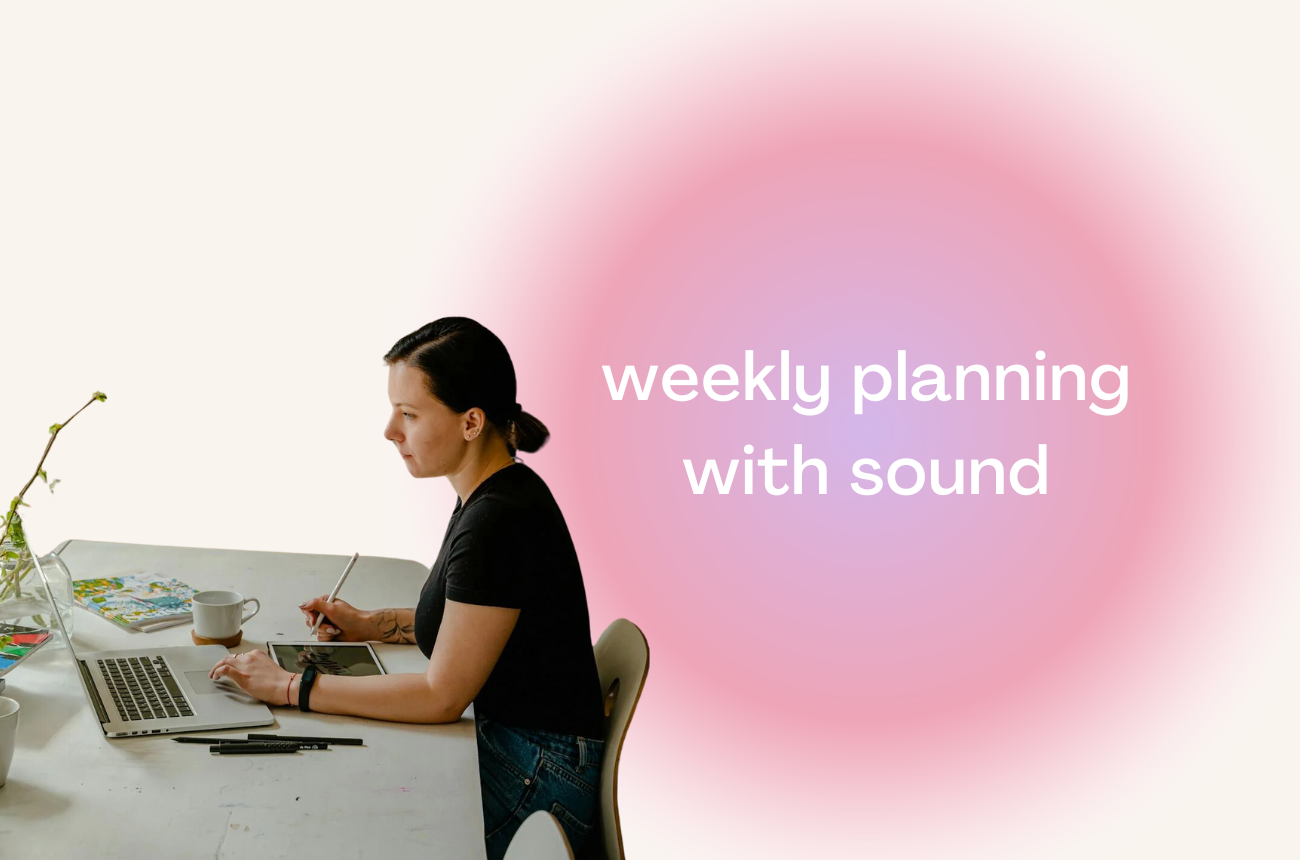Most people plan their week with calendars and to-do lists. Maybe a color-coded notion board. Maybe a time-blocking spreadsheet. But here’s a quiet truth: how your space sounds might be just as important as what’s on your schedule.
Sound isn’t just background. It’s a signal to your brain. It tells you when to dial in, when to ease out, and when it’s okay to stop thinking so hard.
That’s why sound should be part of your weekly planning—not an afterthought. When you know your energy patterns and plan your auditory environment around them, focus becomes less of a fight and more of a flow.
Let’s walk through how to make sound an intentional part of your weekly workflow—so your environment works with your brain, not against it.

Why Plan with Sound in Mind?
Think of your brain like a radio tuner. When you're in sync with the right channel, you can think clearly, feel creative, and finish what you start. But when the “noise” is wrong—either too much stimulation or not enough—focus gets fuzzy.
By designing your sound environment in advance, you can:
- Reduce decision fatigue (no more endlessly skipping playlists)
- Make transitions between work types smoother
- Signal your brain when it’s time to shift gears
- Anchor routines with satisfying, repeatable cues
- Minimize distractions in environments you can’t fully control (shared spaces, open offices, etc.)
It’s not just productivity. It’s nervous system regulation. It’s mental clarity. It’s emotional ease.
Step 1: Map Out Your Weekly Focus Types
Before you choose soundscapes, map out your week in terms of focus energy. Ask yourself:
- When am I most alert or creative?
- When do I need rest or lower-pressure tasks?
- When do I have calls or meetings?
- Which blocks are for deep work vs. admin?
You can break your week down like this:
- High-focus blocks (e.g. writing, problem-solving)
- Shallow focus blocks (e.g. emails, scheduling)
- Collaborative blocks (e.g. calls, meetings)
- Reset blocks (e.g. breaks, lunch, walks)
Now you know what kinds of sounds might help support each part.
Step 2: Pair Each Block with a Sound Environment
Here’s where it gets fun. Each focus type can be paired with a distinct auditory environment to support the mood and mental state you want to be in.
🔹 High-Focus = Low-Stimulation Soundscapes
Think ambient, minimalist, or rhythmic. No lyrics. No big shifts.
Try:
- Brown noise or pink noise
- Cinematic ambient playlists
- Nature-based loops (ocean, forest, wind)
🔹 Shallow Work = Gentle Background Music
You want just enough stimulation to keep momentum.
Try:
- Jazz, lofi, or instrumental hip hop
- Gentle piano or classical playlists
- Café ambiance with soft clatter and conversation
🔹 Reset Blocks = Calming or Playful Audio
This is where you give your brain a break.
Try:
- Nature recordings (rain, birds, wind)
- Sound bath recordings
- Downtempo electronic or dreamy pop
🔹 Collaborative Time = Silence or Light Buffer Noise
During calls, keep it quiet or use subtle audio to mask distractions.
Try:
- Office ambient sounds
- Rainfall or fan noise
- Total silence (when possible)
Step 3: Create a Weekly Sound Plan
Now that you’ve matched sounds to task types, plug them into your existing weekly planner.
For example:
Monday
- 9–11am: Writing block → Brown noise
- 12–1pm: Lunch/reset → Ocean waves + tea
- 2–3:30pm: Admin → Lofi playlist
Tuesday
- 10–11am: Deep project work → Ambient focus mix
- 11:30am–1pm: Meetings → No sound / mic-only
- 3–4pm: Low energy → Gentle jazz + candle + stretch
Repeat for each day. You’re not just planning what you’ll do—you’re planning how you’ll feel doing it.
Step 4: Save & Automate Your Audio Routines
To make it easier to stay consistent, prep your audio in advance:
- Create playlists labeled by task (Deep Work, Reset, Admin, etc.)
- Use apps like LifeAt, which combine scenes + sounds + timers in one place
- Set up smart speaker routines (e.g. “Hey Siri, play writing playlist”)
- Schedule reminders to switch environments when your energy dips
The less friction between you and your desired state, the more likely you’ll stay in flow.
Step 5: Reflect + Adjust Based on Feel
Not every soundscape works for everyone. Some people thrive with instrumental strings, others get more done with ambient café clatter.
End your week with a 2-minute reflection:
- What sounds helped me concentrate best?
- When did I feel most in flow?
- Did any playlists make me feel anxious, sleepy, or annoyed?
Tweak accordingly next week. This isn’t about perfection—it’s about alignment.

Sound Is Strategy—Not Just Aesthetic
If you’re already planning your calendar, your meals, your habits… why not your environment?
We often underestimate how much sound affects our focus, mood, and stress levels. But the science is clear—music and sound are powerful tools for regulation. And when used intentionally, they can shape the kind of week you have.
So next time you sit down to plan Monday through Friday, don’t just ask “what do I need to get done?”
Ask:
What do I need to hear to do it well?
And then… hit play.



.avif)